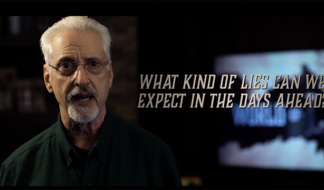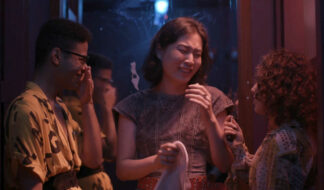To call a film extraordinary usually means it is really great, highly recommended, a "must see." That is not what I mean when I call "Elephant" extraordinary.
The new film by openly gay filmmaker Gus Van Sant ("Good Will Hunting") is based on the 1999 high school shooting at Columbine High School in Littleton Colorado where two students killed 12 fellow students, one teacher, and themselves. It was the winner of the Palme d'Or and the director's prize at Cannes last May.
"Elephant" is not a film for everyone. It is slow moving, occasionally awkward, and incredibly unsettling. I say "Elephant" is extraordinary meaning "extra ordinary." The film does not glorify or justify violence nor does it offer answers or lessons. The film is a day in the life of regular high school kids. The camera acts as a casual observer. Van Sant chose kids who had never acted before and much of the dialog is ad-libbed. At times the dialog is stilted or lame, but most of the time it rings true. Van Sant gives us the archetypes: the jock, the diva snobs, the nerd, the artist. We fill them in with people we knew in high school or kids we know now. His characters are not given time to become fully developed, but there's something in all of them that is instantly recognizable.
The teenage killers in the film aren't painted as villains, nor are they portrayed sympathetically. They're two kids who don't fit in. They're loners. The big question, though, is about their sexuality.
Rumors about the sexuality of the real Columbine killers surfaced early on during the all-night media onslaught that followed the event. Little doubt more than one member of the LGBT community found themselves saying, "Please don't let them be gay" while they watched the gruesome 24-hour footage of screaming and crying students. Were they called gay and taunted with anti-gay epitaphs? Most likely. It is, after all, a favorite insult among hyper-masculine teenage boys.
Van Sant doesn't answer the sexuality question, but he does put the possibility out there. The film shows kids at a GSA meeting before the shooting and several minutes are devoted to a roundtable discussion about whether or not you can tell if someone is gay just by looking at them. The kids seem divided on the issue. The conversation is interesting in light of the scene that comes later.
Much of the buzz around this film stems from a controversial scene of the two young killers in the shower the day of the shooting. Yes they're in the shower together. Yes, they kiss. But that alone does not make them gay. The scene is hardly sexy and the dialog is fatalistic. "I guess this is it," one boy says to the other. "I've never even kissed anybody have you?" It feels less like a sex scene and more like watching a final desperate act by two boys who know they are about to die.
Forgive me if you feel like I've spoiled the film. The ending is hardly a surprise. Anyone making a film based on a widely publicized event has little chance of a surprise ending. It isn't the ending that matters, but how the filmmaker gets us there. Van Sant's is a slow journey where every action, every event no matter how small, is given an almost sacred attention in light of the violence we, not the subjects of the film, know is looming.
Topics:
Uncategorized









